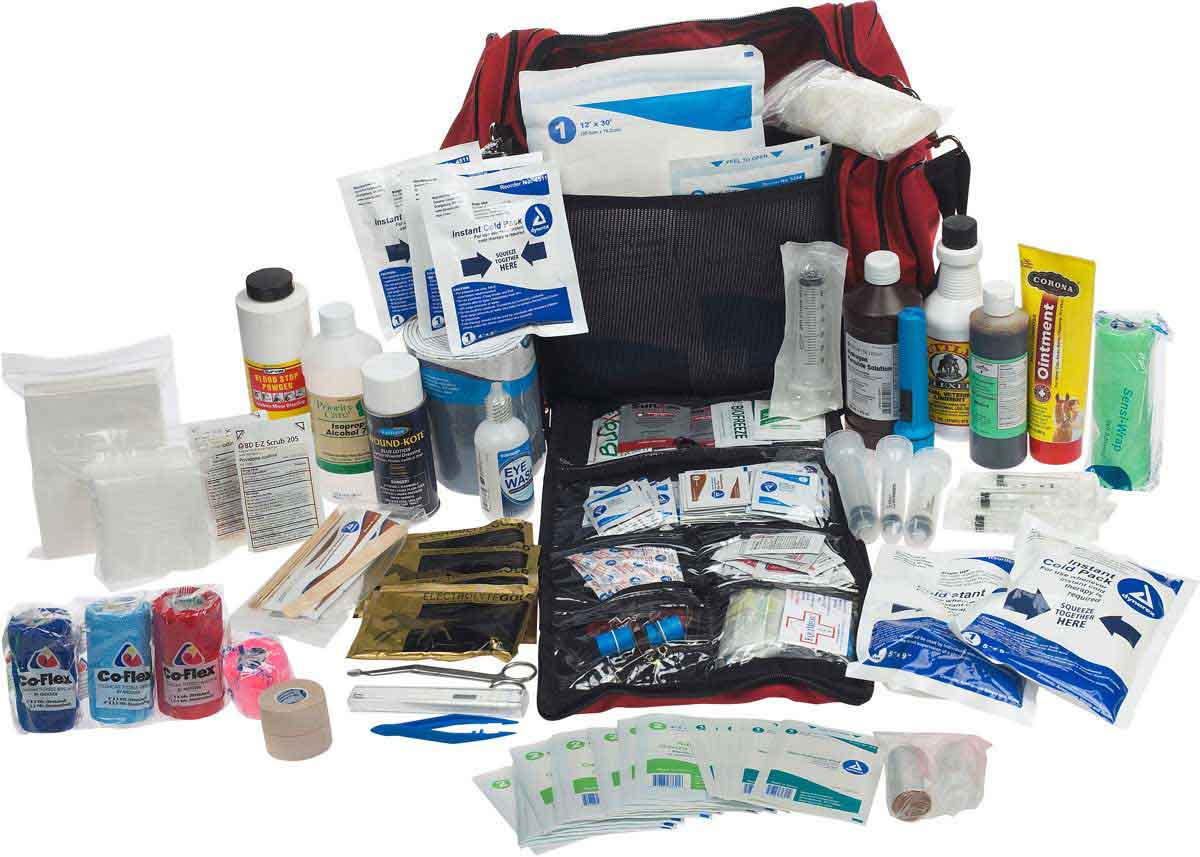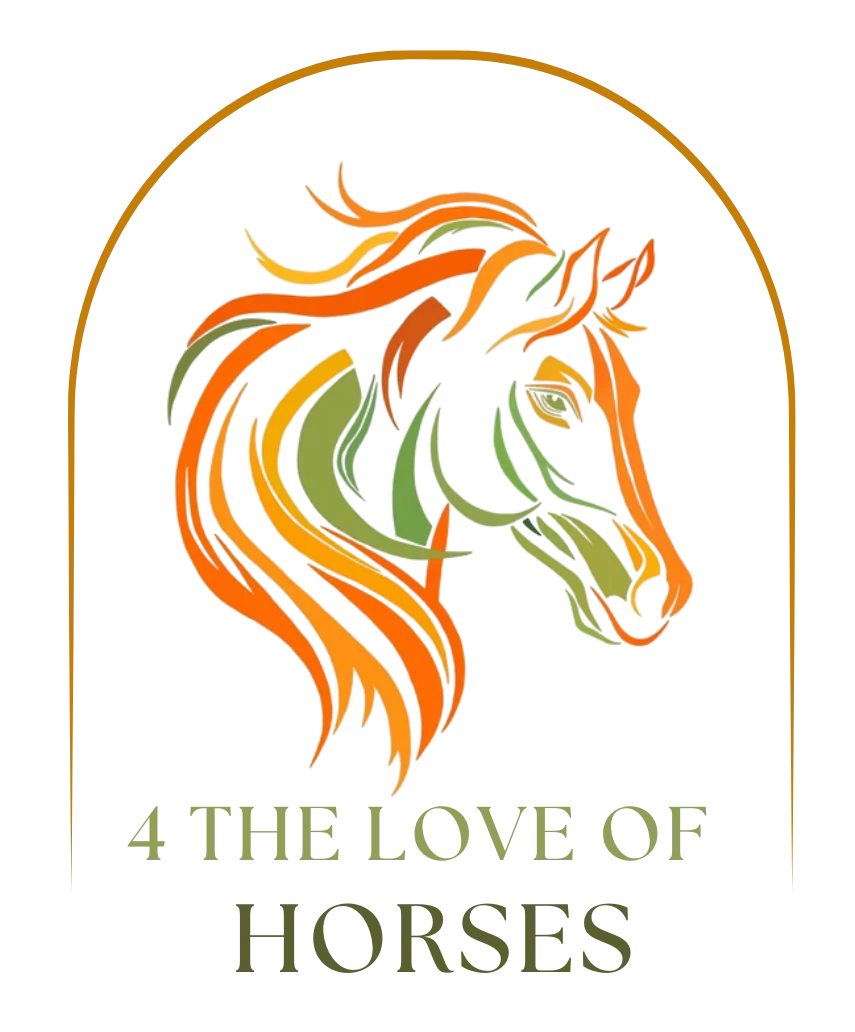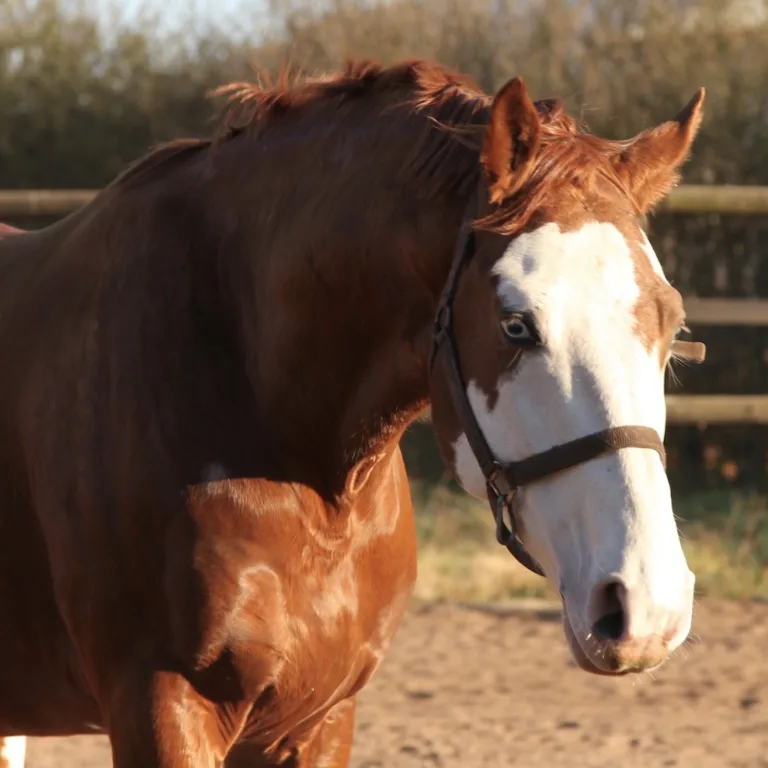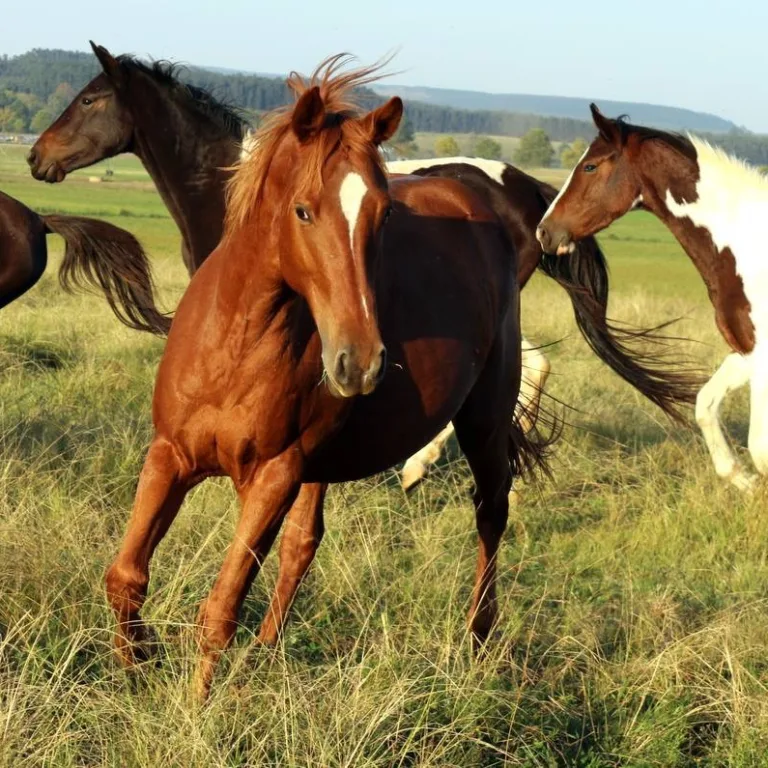Healing Hands: Techniques for Effective Horse Wound Care
Equine first aid is more than just a precautionary measure—it’s a lifeline in critical moments. Prompt and effective first aid can make the difference between a quick recovery and prolonged suffering for your equine companion. As responsible caretakers, understanding the basics of equine first aid is non-negotiable.
In this comprehensive guide, we delve into a crucial aspect of equine first aid—proper wound care. Horses, being active animals, are susceptible to a variety of injuries, ranging from minor cuts to more serious wounds. The significance of mastering wound care cannot be overstated, as it directly impacts the healing process and the overall well-being of your horse.
Beyond the physical aspect, equine first aid fosters a deeper connection between you and your horse. It is an expression of the bond and commitment you share, showcasing your dedication to providing the best possible care. By gaining proficiency in equine first aid, you empower yourself to be a vigilant and capable guardian, ready to address any health challenges your horse may face.

Understanding Common Horse Wounds
The equestrian journey is not without its share of challenges, and among them, injuries to our equine companions are an inevitable aspect. Recognizing and understanding the various types of horse wounds is the first step toward providing effective care. In this section, we’ll explore the diverse range of injuries horses may encounter and gain insights into their potential severity.
Identification of Different Types of Horse Wounds:
- Cuts and Lacerations:
- Commonly caused by sharp objects, such as fencing or metal edges.
- Often characterized by clean or jagged edges, depending on the nature of the object.
- Abrasions and Scrapes:
- Typically surface-level injuries resulting from friction with rough surfaces.
- May appear as superficial scrapes, causing minor discomfort to the horse.
- Puncture Wounds:
- Caused by pointed objects like nails, thorns, or other sharp debris.
- Concealed nature makes them challenging to identify and may involve deeper tissues.
- Contusions or Bruises:
- Resulting from blunt force trauma.
- Visible discoloration and swelling, signaling damage to blood vessels and soft tissues.
- Sprains and Strains:
- Injuries to ligaments, tendons, or muscles due to overexertion or awkward movements.
- Lameness, swelling, and pain are common indicators.
Overview of the Potential Severity of Wounds:
Understanding the severity of horse wounds is crucial for triaging and prioritizing care. Not all wounds are created equal, and assessing their potential impact on your horse’s well-being is essential.
- Superficial Wounds:
- Limited to the outer layers of the skin.
- Generally less severe, with a lower risk of infection.
- Deep Tissue Injuries:
- Extend beyond the skin, involving muscles or other underlying structures.
- Require careful attention to prevent complications.
- Joint or Tendon Involvement:
- Wounds near joints or affecting tendons can have significant consequences.
- Prompt and expert care is essential to minimize long-term damage.
- Potential for Infection:
- Open wounds expose horses to the risk of bacterial contamination.
- Timely cleaning and proper dressing are crucial to prevent infections.
- Systemic Effects:
- Severe wounds may lead to systemic issues, such as shock or secondary infections.
- Vigilant monitoring and professional intervention become paramount.
Essential First Aid Supplies
Equipping yourself with the right tools is fundamental to mastering equine first aid, and having a well-prepared first aid kit can make all the difference in an emergency. In this section, we’ll compile a comprehensive list of must-have supplies for equine first aid, accompanied by an explanation of each item’s purpose in wound care.
List of Must-Have Supplies for Equine First Aid:
- Sterile Gauze Pads:
- Purpose: Used for cleaning and dressing wounds. The sterile nature prevents contamination during the initial stages of wound care.
- Antiseptic Solution:
- Purpose: Crucial for cleaning wounds and preventing infection. Choose a veterinarian-approved antiseptic solution for safe and effective use.
- Adhesive Bandages:
- Purpose: Ideal for covering small wounds or abrasions. They provide protection and help keep the wound clean.
- Non-Stick Dressings:
- Purpose: Prevents the dressing from sticking to the wound, reducing pain and trauma during changes.
- Vet Wrap or Elastic Bandages:
- Purpose: Used for securing dressings, creating pressure bandages, or supporting joints. Vet wrap is flexible, self-adhering, and easily removable.
- Scissors:
- Purpose: Essential for cutting bandages, gauze, and other materials. Choose scissors with rounded tips for safety.
- Tweezers:
- Purpose: Aids in removing debris or foreign objects from wounds. Choose tweezers with a pointed but not sharp tip.
- Thermometer:
- Purpose: Monitors the horse’s temperature, providing valuable information about potential infections or systemic issues.
- Disposable Gloves:
- Purpose: Protects both the horse and the caregiver from contamination during wound care. Disposable gloves maintain a sterile environment.
- Topical Antibiotic Ointment:
- Purpose: Applied to wounds to prevent infection and promote healing. Choose a veterinarian-recommended ointment.
- Clean Towels or Rags:
- Purpose: Useful for cleaning wounds, wiping away excess fluids, or creating padding for bandages.
- Saline Solution:
- Purpose: Ideal for flushing wounds, particularly eyes or sensitive areas. Provides a gentle, sterile cleaning solution.
Explanation of Each Item’s Purpose in Wound Care:
- Sterile Gauze Pads:
- Explanation: These are the foundation of wound care, providing a clean surface for initial cleaning and dressing.
- Antiseptic Solution:
- Explanation: Essential for disinfecting wounds, preventing bacterial growth, and promoting a sterile healing environment.
- Adhesive Bandages:
- Explanation: Small wounds or cuts can be covered to protect against dirt and debris, facilitating a faster recovery.
- Non-Stick Dressings:
- Explanation: Reduces pain and trauma during dressing changes, preventing the dressing from adhering to the wound.
- Vet Wrap or Elastic Bandages:
- Explanation: Provides secure and flexible support for dressings, aiding in wound compression and stabilization.
- Scissors:
- Explanation: Allows for precise cutting of bandages and materials, ensuring safe and efficient wound care.
- Tweezers:
- Explanation: Facilitates the removal of foreign objects from wounds, minimizing the risk of infection.
- Thermometer:
- Explanation: Monitors the horse’s temperature, aiding in the early detection of infections or systemic issues.
- Disposable Gloves:
- Explanation: Maintains a sterile environment during wound care, protecting both the caregiver and the horse from potential contamination.
- Topical Antibiotic Ointment:
- Explanation: Aids in preventing infection and supports the healing process when applied to wounds.
- Clean Towels or Rags:
- Explanation: Versatile tools for cleaning wounds, wiping away fluids, and creating comfortable padding for bandages.
- Saline Solution:
- Explanation: Provides a gentle and sterile solution for flushing wounds, particularly useful for sensitive areas like eyes.
Assemble your equine first aid kit with these essential supplies, ensuring that it is easily accessible and regularly replenished. The right tools, combined with knowledge and a calm demeanor, empower you to provide effective and timely first aid to your horse in times of need.
Assessing the Severity of a Horse Wound
When faced with a horse injury, a quick and accurate assessment of the wound’s severity is crucial for providing appropriate care. In this section, we’ll delve into guidelines for evaluating the seriousness of a horse wound and outline when it’s imperative to seek professional veterinary assistance.
Guidelines for Evaluating the Seriousness of a Wound:
- Depth of the Wound:
- Guideline: Assess how deep the wound penetrates. Deeper wounds may involve muscles, tendons, or even bone.
- Signs of Severity: Deep wounds may show exposed tissues, significant bleeding, or an inability to assess the wound’s depth due to its nature.
- Location of the Wound:
- Guideline: Consider the wound’s location on the horse’s body. Wounds near joints, eyes, or vital organs may be more critical.
- Signs of Severity: Wounds around joints can affect mobility, while those near the eyes or vital organs may pose a higher risk of complications.
- Extent of Bleeding:
- Guideline: Evaluate the amount and type of bleeding. Arterial bleeding is more serious than venous bleeding.
- Signs of Severity: Excessive or pulsating bleeding, especially if the horse shows signs of shock, indicates a potentially severe situation.
- Presence of Foreign Objects:
- Guideline: Check for any foreign objects within the wound. Objects lodged deep may require professional removal.
- Signs of Severity: Inability to remove the foreign object safely or if it appears embedded in vital structures.
- Evidence of Infection:
- Guideline: Look for signs of infection such as swelling, redness, heat, or pus.
- Signs of Severity: Rapidly spreading infection or systemic signs (fever, lethargy) indicate a potentially severe situation requiring prompt attention.
- Lameness or Altered Movement:
- Guideline: Observe the horse’s gait and overall movement. Lameness or difficulty moving may suggest deeper musculoskeletal involvement.
- Signs of Severity: If the horse is unwilling to bear weight on a limb or displays abnormal movement, it may indicate a more serious injury.
- Pain and Distress:
- Guideline: Gauge the horse’s pain level and overall distress. Severe pain may require sedation for effective examination and treatment.
- Signs of Severity: If the horse is in extreme pain, unable to stand, or exhibits signs of shock, immediate veterinary attention is necessary.
When to Seek Professional Veterinary Assistance:
- Severe Bleeding:
- Seek professional help if the bleeding is profuse, pulsating, or difficult to control.
- Deep or Complex Wounds:
- Professional assistance is essential for wounds with potential involvement of deeper tissues, joints, or vital structures.
- Embedded Foreign Objects:
- If you cannot safely remove a foreign object or if it appears deeply embedded, consult a veterinarian.
- Signs of Infection:
- Immediate veterinary attention is required for rapidly spreading infections or systemic signs of illness.
- Lameness or Altered Movement:
- If the horse displays severe lameness or altered movement, professional evaluation is necessary to assess musculoskeletal damage.
- Extensive or Multiple Wounds:
- Professional assistance is advisable for cases involving multiple or extensive wounds.
- Visible Signs of Distress:
- Seek veterinary help if the horse is in extreme pain, unable to stand, or exhibits signs of shock.
Remember, these guidelines are not exhaustive, and each situation may require individual assessment. When in doubt, it’s always safer to consult with a veterinarian promptly. Early intervention can significantly impact the outcome of the wound, ensuring the best possible care and recovery for your horse.
Step-by-Step Wound Cleaning Process
Proper wound cleaning is a critical step in equine first aid, influencing the healing trajectory of your horse’s injury. In this section, we’ll provide detailed instructions on the step-by-step process of cleaning a horse wound, along with recommendations for cleaning solutions and tools.
Step-by-Step Wound Cleaning Process:
- Ensure Safety:
- Explanation: Before approaching the injured horse, ensure the safety of both you and the animal. Use a lead rope to secure the horse and maintain a calm and controlled environment.
- Wash Your Hands and Wear Gloves:
- Explanation: Clean your hands thoroughly and wear disposable gloves to maintain a sterile environment and prevent the introduction of contaminants.
- Assess the Wound:
- Explanation: Examine the wound to understand its size, depth, and location. Note any foreign objects, excessive bleeding, or signs of infection.
- Gently Remove Debris:
- Explanation: If there are loose debris or foreign objects on the wound, use tweezers to gently remove them. Be cautious not to cause further injury.
- Flush the Wound:
- Explanation: Use a sterile saline solution to flush the wound. This helps remove dirt, bacteria, and other contaminants. Use a syringe or a gentle stream to ensure thorough cleaning.
- Use Antiseptic Solution:
- Explanation: Apply a veterinarian-approved antiseptic solution to the wound. Use sterile gauze or cotton balls to gently clean the wound, ensuring all surfaces are treated.
- Avoid Harsh Solutions:
- Explanation: Avoid using harsh or irritating solutions like hydrogen peroxide, as they can damage healthy tissues and impede the healing process.
- Pat Dry with Sterile Gauze:
- Explanation: Gently pat the wound dry with sterile gauze to remove excess moisture. Avoid rubbing, as it may cause further irritation.
- Apply Topical Antibiotic Ointment:
- Explanation: Apply a thin layer of topical antibiotic ointment to the wound. This helps prevent infection and promotes healing. Follow veterinary recommendations for specific ointments.
- Secure Dressing or Bandage:
- Explanation: If necessary, apply a sterile dressing and secure it in place with vet wrap or elastic bandages. Ensure that the bandage is snug but not too tight to allow for proper circulation.
- Monitor for Signs of Discomfort:
- Explanation: Monitor the horse for signs of discomfort during the cleaning process. If the horse becomes excessively agitated or if pain seems to increase, consult with a veterinarian for further guidance.
Recommended Cleaning Solutions and Tools:
- Sterile Saline Solution:
- Explanation: Gentle and non-irritating, saline solution is ideal for initial wound flushing and cleaning.
- Antiseptic Solution (Veterinarian-Approved):
- Explanation: Choose an antiseptic solution recommended by your veterinarian for its efficacy and safety in wound care.
- Tweezers:
- Explanation: Use tweezers with a pointed but not sharp tip for the careful removal of debris or foreign objects.
- Sterile Gauze or Cotton Balls:
- Explanation: Soft and non-adherent, sterile gauze or cotton balls are essential for applying cleaning solutions and patting the wound dry.
- Disposable Gloves:
- Explanation: Maintain a sterile environment and protect yourself from potential contaminants by wearing disposable gloves.
- Topical Antibiotic Ointment:
- Explanation: Choose a veterinarian-recommended topical antibiotic ointment to prevent infection and support the healing process.
- Vet Wrap or Elastic Bandages:
- Explanation: These are used to secure dressings in place. Vet wrap is flexible, self-adhering, and easy to remove.
- Lead Rope and Halter:
- Explanation: Ensure the horse is safely restrained during the cleaning process using a lead rope and halter.
By following this step-by-step process and utilizing the recommended cleaning solutions and tools, you contribute to creating an optimal environment for your horse’s wound healing. Always consult with your veterinarian for specific guidance based on the nature and severity of the wound.
Choosing the Right Dressing and Bandaging Techniques
Selecting the appropriate dressing and applying it correctly are crucial aspects of equine wound care. In this section, we will provide an overview of various types of dressings for horse wounds and offer a step-by-step guide to proper bandaging techniques.
Overview of Various Types of Dressings for Horse Wounds:
- Non-Adherent Dressings:
- Explanation: These dressings are designed to minimize adherence to the wound, reducing trauma during changes. They are often made of materials like Telfa or silicone.
- Absorbent Dressings:
- Explanation: Ideal for wounds with moderate to heavy exudate, absorbent dressings help manage moisture levels. Materials like alginate or hydrofiber are commonly used.
- Hydrocolloid Dressings:
- Explanation: Hydrocolloid dressings provide a moist environment that supports wound healing. They are particularly useful for wounds with minimal to moderate exudate.
- Foam Dressings:
- Explanation: Foam dressings absorb exudate and provide a cushioning effect. They are suitable for wounds with moderate to heavy drainage.
- Alginate Dressings:
- Explanation: Derived from seaweed, alginate dressings are highly absorbent and conform to the shape of the wound. They are suitable for wounds with heavy exudate.
- Silver Dressings:
- Explanation: Silver-impregnated dressings have antimicrobial properties, helping prevent infections in wounds. They are particularly useful for wounds at higher risk of bacterial contamination.
- Composite Dressings:
- Explanation: These dressings combine different materials to provide a multifaceted approach to wound care, often incorporating layers for absorption, protection, and adherence.
- Compression Bandages:
- Explanation: Compression bandages apply pressure to reduce swelling and promote circulation. They are often used in the management of wounds on limbs.
Step-by-Step Guide to Proper Bandaging Techniques:
- Prepare the Wound:
- Explanation: Ensure the wound is clean, dry, and has been appropriately treated with antiseptic solutions and ointments as per veterinary recommendations.
- Choose the Right Dressing:
- Explanation: Select an appropriate dressing based on the nature and severity of the wound. Consider factors such as exudate levels, wound depth, and the need for antimicrobial properties.
- Apply Topical Antibiotic Ointment:
- Explanation: If recommended by your veterinarian, apply a thin layer of topical antibiotic ointment to the wound before dressing application.
- Place the Dressing:
- Explanation: Gently place the selected dressing over the wound, ensuring full coverage. Secure it in place, taking care not to disturb the wound during this process.
- Secure with Bandage Material:
- Explanation: Use vet wrap or elastic bandages to secure the dressing in place. Start from the bottom and work your way up, ensuring a snug but not tight fit.
- Avoid Wrinkles or Bunching:
- Explanation: Smooth out the bandage as you go to avoid wrinkles or bunching that could create pressure points or compromise circulation.
- Secure the Ends Properly:
- Explanation: Secure the ends of the bandage well, ensuring they are adequately fastened to prevent unraveling. Use clips or tape as needed.
- Check for Proper Tension:
- Explanation: Ensure that the bandage is snug but not overly tight. Check for signs of improper tension, such as swelling or discoloration, and adjust as necessary.
- Monitor Regularly:
- Explanation: Regularly check the bandage for signs of slipping, loosening, or any complications. Monitor the wound for signs of infection or other issues.
- Change Dressings as Advised:
- Explanation: Follow your veterinarian’s advice on how often to change dressings. Proper wound care often involves regular changes to promote healing and prevent infection.
By understanding the various types of dressings available and following a meticulous bandaging technique, you contribute significantly to the success of your horse’s wound healing process. Always consult with your veterinarian for specific recommendations tailored to your horse’s unique needs and the characteristics of the wound
Preventing Infections and Complications
Preventing infections and recognizing early signs of complications are paramount in ensuring the successful healing of horse wounds. In this section, we will provide tips on preventing infections in horse wounds and guidance on identifying early signs of complications.
Tips on Preventing Infection in Horse Wounds:
- Prompt and Thorough Cleaning:
- Explanation: Begin the wound care process promptly after the injury occurs. Thoroughly clean the wound with a sterile saline solution, ensuring all debris and contaminants are removed.
- Use Veterinarian-Approved Antiseptic Solutions:
- Explanation: Choose antiseptic solutions recommended by your veterinarian for their efficacy and safety. Avoid harsh solutions that can impede the healing process.
- Apply Topical Antibiotic Ointment:
- Explanation: After cleaning, apply a veterinarian-recommended topical antibiotic ointment to the wound. This helps create a barrier against infection.
- Choose Appropriate Dressings:
- Explanation: Select dressings based on the wound characteristics and follow veterinary advice. Some dressings, like silver-impregnated or antimicrobial dressings, can help prevent infections.
- Maintain a Clean Environment:
- Explanation: Keep the horse’s living environment clean to reduce the risk of secondary contamination. Regularly clean stables, paddocks, and grooming areas.
- Monitor for Signs of Infection:
- Explanation: Regularly check the wound for signs of infection, such as increased swelling, redness, heat, or discharge. Any sudden changes should be reported to the veterinarian.
- Control Flies and Insects:
- Explanation: Flies and insects can introduce contaminants to wounds. Use fly repellents, screens, and other measures to minimize their presence around the horse.
- Administer Prophylactic Antibiotics as Advised:
- Explanation: In some cases, especially with deep or puncture wounds, your veterinarian may recommend a short course of prophylactic antibiotics to prevent bacterial infection.
- Implement Quarantine Measures if Necessary:
- Explanation: If the wound is suspected to be a result of a contagious condition, implement quarantine measures to prevent the spread of infection to other horses.
- Follow Veterinary Recommendations:
- Explanation: Adhere to any additional recommendations provided by your veterinarian for preventing infections specific to your horse’s condition and the nature of the wound.
Recognizing Early Signs of Complications:
- Increased Swelling:
- Explanation: Any sudden or disproportionate increase in swelling around the wound may indicate inflammation or infection.
- Change in Discharge Characteristics:
- Explanation: Monitor the wound discharge. If it changes in color, consistency, or odor, it could be a sign of infection or complications.
- Foul Odor:
- Explanation: A foul or unpleasant odor emanating from the wound could indicate bacterial infection or the presence of necrotic tissue.
- Excessive Heat or Redness:
- Explanation: An increase in local temperature or persistent redness around the wound may suggest inflammation or infection.
- Lameness or Behavioral Changes:
- Explanation: Changes in the horse’s gait, reluctance to move, or alterations in behavior may indicate pain or discomfort related to the wound.
- Delayed Healing:
- Explanation: If the wound does not show signs of improvement or if healing appears to be delayed, it may be a sign of underlying complications.
- Systemic Signs:
- Explanation: Watch for systemic signs such as fever, lethargy, or a decrease in appetite, as these could indicate a more serious infection or the spread of bacteria.
- Development of Proud Flesh:
- Explanation: Excessive granulation tissue, known as proud flesh, can impede wound healing. Consult with your veterinarian if this occurs.
- Increased Pain or Sensitivity:
- Explanation: If the horse becomes more sensitive to touch or shows signs of increased pain, it may indicate complications within the wound.
- Any Unusual Changes:
- Explanation: Trust your instincts. If you notice any unusual changes in the wound or the horse’s overall condition, seek veterinary advice promptly.
Regular and vigilant monitoring, coupled with proactive wound care measures, is key to preventing infections and addressing complications promptly. Always consult with your veterinarian if you have concerns or notice any changes in the wound or your horse’s behavior. Early intervention can significantly improve the outcome and reduce the risk of long-term complications
Monitoring and Follow-Up Care
Guidelines for monitoring the healing progress of a horse’s wound are crucial to ensure that the treatment plan is effective and complications are addressed promptly. In this section, we will provide guidelines for monitoring healing progress and offer insights into when to adjust the treatment plan or seek additional veterinary advice.
Guidelines for Monitoring the Healing Progress:
- Regular Visual Inspection:
- Explanation: Conduct daily visual inspections of the wound to observe changes in size, color, and overall appearance. Note any signs of inflammation, discharge, or abnormalities.
- Assessing Wound Closure:
- Explanation: Track the gradual closure of the wound. As the wound heals, the edges should come together, and the tissue in the center should fill in.
- Monitoring Swelling:
- Explanation: Regularly assess the level of swelling around the wound. A gradual reduction in swelling is expected as the healing process progresses.
- Checking Temperature:
- Explanation: Feel the area around the wound for any increase in temperature, which could indicate inflammation or infection.
- Observing Granulation Tissue:
- Explanation: Healthy granulation tissue is part of the healing process. Monitor the development of granulation tissue without excessive growth or proud flesh.
- Assessing Hair Growth:
- Explanation: Watch for the return of hair growth around the wound, which indicates the progression of the healing process.
- Noting Changes in Behavior:
- Explanation: Pay attention to the horse’s behavior. If the horse seems more comfortable, moves without lameness, and exhibits normal activity levels, it is a positive sign.
- Recording Any Discharge:
- Explanation: Note the characteristics of any wound discharge. A reduction in the amount of discharge and a transition to clearer fluid are positive signs.
- Checking for Signs of Pain:
- Explanation: Observe the horse for signs of pain, such as flinching or increased sensitivity around the wound. Reduced signs of pain indicate improved comfort.
- Maintaining a Healing Journal:
- Explanation: Keep a healing journal documenting daily observations, changes in treatment, and any concerns. This helps in tracking progress and identifying patterns.
When to Adjust the Treatment Plan or Seek Additional Veterinary Advice:
- Lack of Improvement:
- Explanation: If there is no noticeable improvement in the wound after an initial period of treatment, it may be necessary to reevaluate the approach.
- Persistent Swelling or Inflammation:
- Explanation: If swelling or inflammation persists or increases, despite initial treatment, adjustments to the treatment plan may be needed.
- Excessive Granulation Tissue:
- Explanation: If proud flesh becomes a concern and inhibits the healing process, consult with your veterinarian about potential interventions or adjustments to the treatment plan.
- Recurrent Infections:
- Explanation: If the wound experiences recurrent infections or signs of bacterial contamination, reassess the cleaning and dressing procedures and seek veterinary advice.
- Delayed Healing:
- Explanation: If the wound does not exhibit signs of timely healing or if there are setbacks in the healing process, consult with your veterinarian to identify potential underlying issues.
- Signs of Systemic Infection:
- Explanation: If the horse shows signs of systemic infection, such as fever, lethargy, or a decrease in appetite, seek immediate veterinary attention.
- Sudden Behavioral Changes:
- Explanation: Sudden changes in the horse’s behavior, especially if associated with increased pain or discomfort, require prompt attention and possible adjustment of the treatment plan.
- Complications in Joint or Tendon Areas:
- Explanation: Wounds near joints or tendons can be complex. If there are signs of complications or if the horse exhibits lameness, consult with your veterinarian immediately.
- Allergic Reactions:
- Explanation: If the horse develops an allergic reaction to any of the applied treatments or dressings, discontinue use and consult with your veterinarian for alternative options.
- Consulting Veterinary Guidance Regularly:
- Explanation: Regularly consult with your veterinarian for scheduled follow-ups. Share your observations, and seek guidance on any adjustments needed to the treatment plan.
Remember, successful wound healing often requires a dynamic and adaptive approach. Regular monitoring and clear communication with your veterinarian allow for timely adjustments to the treatment plan, ensuring the best possible outcome for your horse’s recovery. If in doubt or if unexpected changes occur, it’s always best to seek professional veterinary advice promptly
Addressing Specific Types of Horse Wounds
Tailoring care to different types of wounds and considering the specific body parts involved is crucial for effective equine first aid. In this section, we will explore how to customize care for various types of horse wounds, including cuts, abrasions, punctures, and provide special considerations for wounds in specific body parts such as the legs, face, and torso.
Tailoring Care to Different Types of Wounds:
- Cuts and Lacerations:
- Care Considerations:
- Assess the depth and length of the cut.
- Control bleeding using pressure.
- Clean the wound thoroughly to prevent infection.
- Consider stitches for deep cuts if recommended by the veterinarian.
- Care Considerations:
- Abrasions and Scrapes:
- Care Considerations:
- Clean the abrasion gently with a mild antiseptic solution.
- Apply a non-stick dressing to protect the wound.
- Monitor for signs of infection, especially if the wound is on a joint or sensitive area.
- Care Considerations:
- Puncture Wounds:
- Care Considerations:
- Puncture wounds can be deceptive; ensure a thorough examination for foreign objects.
- Clean the wound carefully to prevent infection.
- Seek veterinary advice for potential tetanus prevention.
- Care Considerations:
- Contusions or Bruises:
- Care Considerations:
- Apply cold compresses to reduce swelling in the early stages.
- Monitor for lameness and assess for underlying injuries.
- Provide adequate rest for the horse.
- Care Considerations:
- Sprains and Strains:
- Care Considerations:
- Limit the horse’s activity to allow for rest and recovery.
- Apply cold compresses initially, followed by warm compresses in later stages.
- Gradually reintroduce exercise under veterinary guidance.
- Care Considerations:
Special Considerations for Wounds in Specific Body Parts:
- Leg Wounds:
- Care Considerations:
- Leg wounds are prone to contamination, so cleanliness is crucial.
- Apply compression bandages to control swelling.
- Exercise caution with bandaging to avoid compromising circulation.
- Care Considerations:
- Face Wounds:
- Care Considerations:
- Face wounds may be more prone to infection due to exposure.
- Use extra caution when cleaning around the eyes and nostrils.
- Soft, non-adherent dressings may be preferable.
- Care Considerations:
- Torso Wounds:
- Care Considerations:
- Monitor for signs of internal injuries in addition to external wounds.
- Use sterile dressings and bandages to protect the wound.
- Consult with a veterinarian for thorough examination and guidance.
- Care Considerations:
- Joint Wounds:
- Care Considerations:
- Joint wounds require immediate attention due to the risk of joint involvement.
- Minimize movement to prevent further damage.
- Consult with a veterinarian for potential joint injections or drainage.
- Care Considerations:
- Hoof Wounds:
- Care Considerations:
- Hoof wounds can be challenging due to weight-bearing.
- Keep the hoof clean and dry, applying appropriate dressings.
- Consult with a farrier or veterinarian for specialized care.
- Care Considerations:
- Ear Wounds:
- Care Considerations:
- Ear wounds may require extra care due to their sensitivity.
- Clean gently, avoiding pressure or excessive manipulation.
- Monitor for signs of infection or complications.
- Care Considerations:
- Tail Wounds:
- Care Considerations:
- Tail wounds may be prone to contamination from manure or dirt.
- Clean thoroughly and use tail bandages if necessary.
- Monitor for signs of infection, especially if the wound is near the base of the tail.
- Care Considerations:
- Mouth or Lip Wounds:
- Care Considerations:
- Clean the wound carefully to avoid irritation.
- Monitor for difficulty eating or signs of discomfort while eating.
- Seek veterinary advice for wounds that may impact eating or drinking.
- Care Considerations:
Remember that each horse and each wound is unique, requiring an individualized approach to care. Regular communication with a veterinarian is essential to ensure the best possible outcome for your horse’s recovery. Tailoring care to specific wound types and body parts allows for targeted and effective treatment, promoting optimal healing
Conclusion
In conclusion, mastering equine first aid for wound care is an essential skill for every horse owner. The well-being of your horse relies on prompt and effective responses to injuries. Here, we summarize the key points and emphasize the importance of regular first aid training and preparedness.
Key Points in Equine First Aid for Wound Care:
- Timely Response:
- Recognize the importance of prompt response to horse wounds. Timely and appropriate care significantly impacts the healing process.
- Thorough Examination:
- Conduct a thorough examination of the wound, considering its type, location, and severity. This initial assessment guides your approach to care.
- Cleaning and Disinfection:
- Clean wounds meticulously using sterile saline solutions and veterinarian-approved antiseptic solutions. Proper cleaning reduces the risk of infection.
- Choosing the Right Supplies:
- Assemble a well-equipped equine first aid kit with essential supplies such as sterile gauze, antiseptic solutions, bandages, and protective gear.
- Monitoring Healing Progress:
- Regularly monitor the wound for signs of improvement, such as reduced swelling, changes in discharge, and the development of healthy granulation tissue.
- Tailoring Care to Wound Types:
- Customize your care based on the specific type of wound, whether it’s a cut, abrasion, puncture, or contusion. Tailoring care optimizes the healing process.
- Special Considerations for Body Parts:
- Consider the unique challenges posed by wounds in specific body parts, such as the legs, face, torso, joints, hooves, ears, and tail. Adapt your approach accordingly.
- Preventing Infections and Complications:
- Employ preventive measures to minimize the risk of infections. Recognize early signs of complications and seek veterinary advice promptly.
- Adjusting Treatment Plans:
- Be flexible in your treatment approach. Adjust the treatment plan based on the horse’s response, and seek veterinary guidance regularly.
- Regular First Aid Training:
- Emphasize the importance of regular first aid training for horse owners. Stay informed about the latest techniques, supplies, and best practices in equine first aid.
Encouragement for Regular First Aid Training and Preparedness:
In the dynamic world of equine care, knowledge and preparedness are your greatest assets. Regular first aid training ensures that you are well-equipped to handle unexpected situations, providing the best care for your horse. Consider the following:
- Stay Informed:
- Keep yourself informed about advancements in equine first aid. Attend workshops, seminars, or online courses to stay up-to-date with the latest practices.
- Practice Regularly:
- Regular practice of first aid techniques enhances your proficiency and confidence. Familiarize yourself with your first aid kit, and conduct mock scenarios to simulate real-life situations.
- Update Your First Aid Kit:
- Periodically review and update your equine first aid kit. Ensure that all supplies are within their expiration dates and replace any items that have been used or compromised.
- Build a Network:
- Establish connections with veterinary professionals and fellow horse owners. A supportive network can offer valuable insights, advice, and assistance during emergencies.
- Emergency Response Plan:
- Develop a comprehensive emergency response plan. Know the location and contact information for the nearest veterinary clinics, and have a clear plan for transporting the horse if needed.
- Prioritize Safety:
- Safety is paramount. Always prioritize the safety of both yourself and the horse during first aid procedures. Remain calm, assess the situation, and take necessary precautions.
By prioritizing regular first aid training and preparedness, you not only enhance the well-being of your horse but also cultivate a sense of confidence and competence as a caregiver. Your dedication to equine first aid ensures that you are ready to face challenges and provide optimal care, fostering a strong bond between you and your equine companion. but also cultivate a sense of confidence and competence as a caregiver. Your dedication to equine first aid ensures that you are ready to face challenges and provide optimal care, fostering a strong bond between you and your equine companion.
further reading
How To Help Horse Wounds Heal Move your horse to a safe place to limit further injury and keep him quiet. · Use clean towels to apply direct pressure if the wound is actively bleeding.
Wound Management | Rossdales Veterinary Surgeons› Routine Stable VisitsThe best solution for irrigation is sterile saline with or without dilute antiseptics. If you can do it safely without further injuring the horse, or yourself, …







